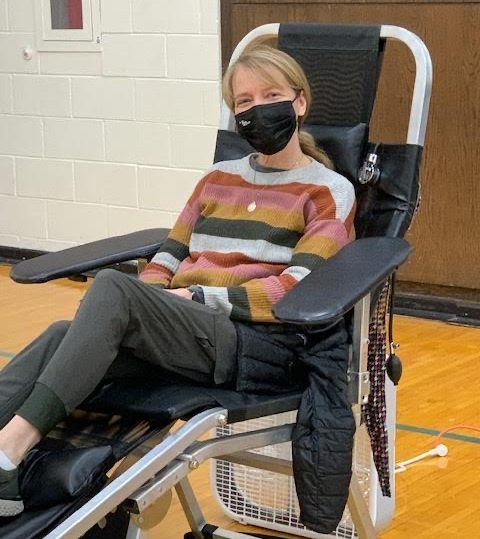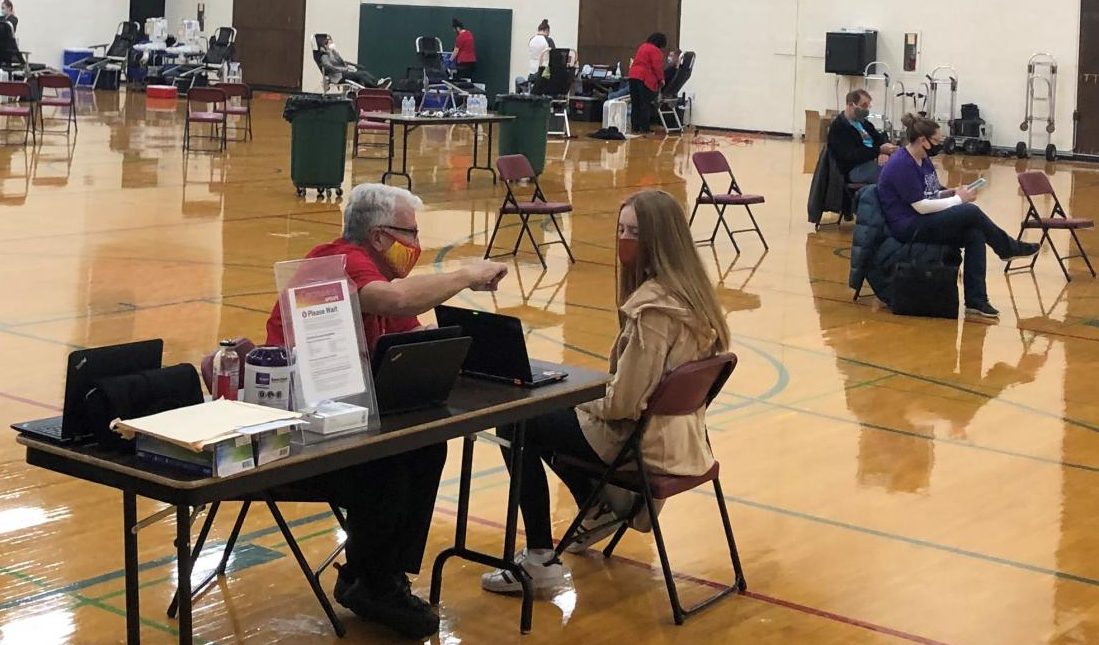Halloween blood drive scares up support for local hospitals
Peer Helping surpasses goal, benefits NorthShore hospitals

Peer Helping
A resident readies to donate blood at the Peer Helping Blood Drive on Oct. 24 at the Northfield campus
On Saturday, Oct. 24, New Trier’s Peer Helping blood drive was held at the Northfield campus, where, despite COVID-19, the community and students successfully donated blood that could up up to 141 patients.
Peer Helping, a service club that meets sixth period, set a goal of 42 donors, and the New Trier community ended up beating it with 47 donors.
The club partnered with Versiti, a nonprofit holding company for affiliated blood centers across the upper Midwest. All of the blood was donated to NorthShore hospitals.
“Usually the blood drives are held during school hours on Halloween/Valentines day, however due to safety restrictions, we held the drive on Saturday. Peer Helping also had to limit the number of people getting their blood drawn at once because of social distancing orders,” said senior peer helping board member, Kristin Braeseke.
With safety the top priority of the fall blood drive, the organizers created time slots to manage the number of people in the gym at once.
“I used to go to school early so I could finish donating and recover before my first period class started. Since this blood drive was held on a Saturday I felt less stressed about waking up early or missing any classes. Since there were no classes afterwards, people may have been less worried about being dizzy,” said junior Julia Cohen, a third time donor.
The Peer Helping board members’ role for the blood drive was to contact the organizations, market the blood drive around the school, and monitor the blood drive on the day.

“When you’re a board member you see much more of the procedures being done for each event we organize. Board members meet an extra day if the week to organize what needs to be done during our meeting, and what needs to be done for the event in general,” said senior board member Sania Sania.
During the day of the blood drive, donors checked in, were verified that they were eligible to donate, and ate snacks after, to prevent fatigue or dizziness. If they did not have any reactions, the nurses allowed them to leave.
“The donation itself was pretty short, about 10 minutes. After I finished donating, I was instructed to wait another 15 minutes before leaving the gym. Many people feel nauseous or dizzy after donating, so they are provided with snacks like cookies or crackers before they leave,” said Cohen.
According to kinetic wellness teacher Kathryn Kalnes, a sponsor for Peer Helping, donors must be at least 16 years old to be eligible to donate blood. There are also travel and weight requirements which vary from year to year. Each person can save up to 3 lives with their donation.
“We appreciate everyone coming out to donate at the blood drive, even during the times of COVID. Without them we would not be able to have this event,” said Sania.

Due to the pandemic, blood drives have been more needed than ever.
“This year because of COVID I feel as though those who were healthy enough to, wanted to give back to the greater community during these tough, unprecedented times by giving blood,” said Braeseke.
Sania said blood is the most important gift you can give to someone. She appreciates those who helped run the event, including Physical Plant Services (PPS) and security.
“You’re saving someone’s life just by giving one hour of your 24 hour day. It is a great way to give back to the community and set an example of others,” said Sania.





































